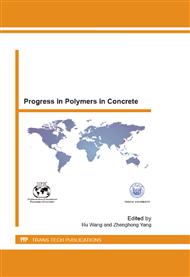p.490
p.495
p.502
p.508
p.514
p.520
p.527
p.532
p.538
Manufacture of Lime Mortars for Restoration with Addition of Polyamide Powder Waste
Abstract:
We use lime mortar in historic building’s interventions instead of cement mortars, due to its better compatibility with the masonry walls. The objective of the present research is to examine the behavior of a traditional lime mortar by the addition of polyamide powder waste. In certain circumstances we need to improve the mortar properties, such as increasing its impermeability while maintaining its breathability. This happens when we need to coat the filling of a stone wall that has been exposed to the outside. First of all we study the properties of a traditional lime mortar, as a reference. Then we replace aggregates using polyamide powder waste with different dosages. Subsequently we carry out some studies on the resulting mortars, through a series of tests, such as water vapour permeability and water absorption capacity through capillarity. Finally we check if the hydrophobic behavior improves, while maintaining the capacity of vapour transpiration.
Info:
Periodical:
Pages:
532-537
Citation:
Online since:
April 2013
Authors:
Price:
Сopyright:
© 2013 Trans Tech Publications Ltd. All Rights Reserved
Share:
Citation:


